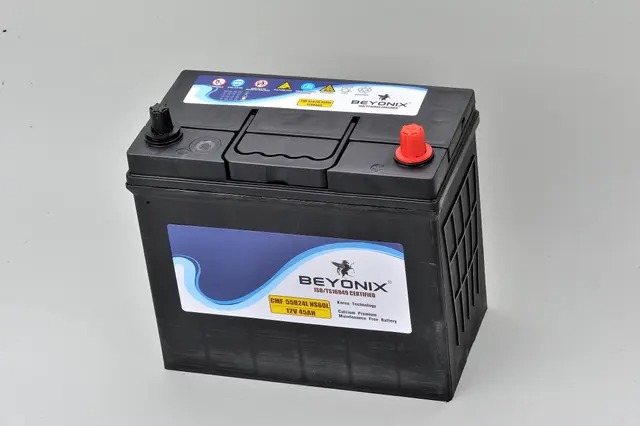English
Blogs
-
 2025-11-24What is an EFB Automotive Battery?Automotive batteries are an essential component of every vehicle, providing the power necessary to start the engine and power various electrical systems. In recent years, automotive battery technology has evolved significantly, particularly with the introduction ofRead More
2025-11-24What is an EFB Automotive Battery?Automotive batteries are an essential component of every vehicle, providing the power necessary to start the engine and power various electrical systems. In recent years, automotive battery technology has evolved significantly, particularly with the introduction ofRead More -
 2025-11-17Ever wondered why your car battery fails unexpectedly? Proper storage and state of charge are key to preventing this. Understanding these factors can save you time and money. In this post, you'll learn essential tips for battery storage, temperature effects, and maintaining optimal charge.How TemperRead More
2025-11-17Ever wondered why your car battery fails unexpectedly? Proper storage and state of charge are key to preventing this. Understanding these factors can save you time and money. In this post, you'll learn essential tips for battery storage, temperature effects, and maintaining optimal charge.How TemperRead More -
 2025-11-13Ever wondered why some batteries last longer than others? Battery cycle counts hold the key. Understanding these counts is crucial for choosing between lead-acid and lithium-ion batteries. In this post, you'll learn how cycle counts impact battery performance and longevity, helping you make informeRead More
2025-11-13Ever wondered why some batteries last longer than others? Battery cycle counts hold the key. Understanding these counts is crucial for choosing between lead-acid and lithium-ion batteries. In this post, you'll learn how cycle counts impact battery performance and longevity, helping you make informeRead More -
 2025-11-10What Is Lead Acid Battery Thermal Runaway?Lead acid batteries are a staple in various applications, from cars to industrial equipment. But what happens when these reliable power sources face a dangerous phenomenon like thermal runaway? This article explores the intricacies of lead acid batteries theRead More
2025-11-10What Is Lead Acid Battery Thermal Runaway?Lead acid batteries are a staple in various applications, from cars to industrial equipment. But what happens when these reliable power sources face a dangerous phenomenon like thermal runaway? This article explores the intricacies of lead acid batteries theRead More -
 2025-11-06Ever wondered why your device's battery doesn't last long? Identifying battery types is crucial. Lithium-ion and Lead Acid Battery Lead Acid Battery have unique traits. In this post, you'll learn how to distinguish them by appearance, labels, voltage, and more.Appearance DifferencesSize and weight cRead More
2025-11-06Ever wondered why your device's battery doesn't last long? Identifying battery types is crucial. Lithium-ion and Lead Acid Battery Lead Acid Battery have unique traits. In this post, you'll learn how to distinguish them by appearance, labels, voltage, and more.Appearance DifferencesSize and weight cRead More -
 2025-11-03In today’s automotive industry, the demand for high-performance and reliable batteries is growing rapidly. Modern vehicles are increasingly equipped with start-stop systems, advanced infotainment, and various electronic devices that place higher demands on the battery.Read More
2025-11-03In today’s automotive industry, the demand for high-performance and reliable batteries is growing rapidly. Modern vehicles are increasingly equipped with start-stop systems, advanced infotainment, and various electronic devices that place higher demands on the battery.Read More -
 2025-10-09Modern vehicles are equipped with increasingly sophisticated electronics and start-stop systems, placing higher demands on automotive batteries. These systems require reliable, efficient, and long-lasting power sources to ensure smooth operation, particularly in urban driving conditions where frequent stopping and starting is common.Read More
2025-10-09Modern vehicles are equipped with increasingly sophisticated electronics and start-stop systems, placing higher demands on automotive batteries. These systems require reliable, efficient, and long-lasting power sources to ensure smooth operation, particularly in urban driving conditions where frequent stopping and starting is common.Read More -
 2025-10-07In today’s automotive landscape, vehicles are increasingly equipped with start-stop systems and high-powered electronic features. These advancements enhance fuel efficiency, reduce emissions, and improve driver comfort. However, they also place higher demands on vehicle batteries.Read More
2025-10-07In today’s automotive landscape, vehicles are increasingly equipped with start-stop systems and high-powered electronic features. These advancements enhance fuel efficiency, reduce emissions, and improve driver comfort. However, they also place higher demands on vehicle batteries.Read More -
 2025-10-06In today’s automotive industry, the demand for high-performance, durable batteries has grown exponentially. With the increasing adoption of vehicles equipped with start-stop systems, hybrid technologies, and frequent short-trip driving patterns, traditional lead-acid batteries often fall short in delivering the required performance and longevity.Read More
2025-10-06In today’s automotive industry, the demand for high-performance, durable batteries has grown exponentially. With the increasing adoption of vehicles equipped with start-stop systems, hybrid technologies, and frequent short-trip driving patterns, traditional lead-acid batteries often fall short in delivering the required performance and longevity.Read More -
 2025-09-22Introduction have you ever tried to start your car, only to be met with a frustrating click instead of the engine roaring to life? The culprit might be your starter battery’s voltage. A healthy starter battery is key to your car's ability to start and run smoothly.Read More
2025-09-22Introduction have you ever tried to start your car, only to be met with a frustrating click instead of the engine roaring to life? The culprit might be your starter battery’s voltage. A healthy starter battery is key to your car's ability to start and run smoothly.Read More
Product Category
Contact Us
Email: market@chinajeje.com
Phone: +86-18257975933
WhatsApp: +86-18257975933
Address: Youbu Industrial Area, Lanxi City, Zhejiang, China
Copyright © 2023 JUJIANG POWER TECHNOLOGY Co., Ltd. All Rights Reserved. Sitemap. Privacy Policy. Support by leadong.com













